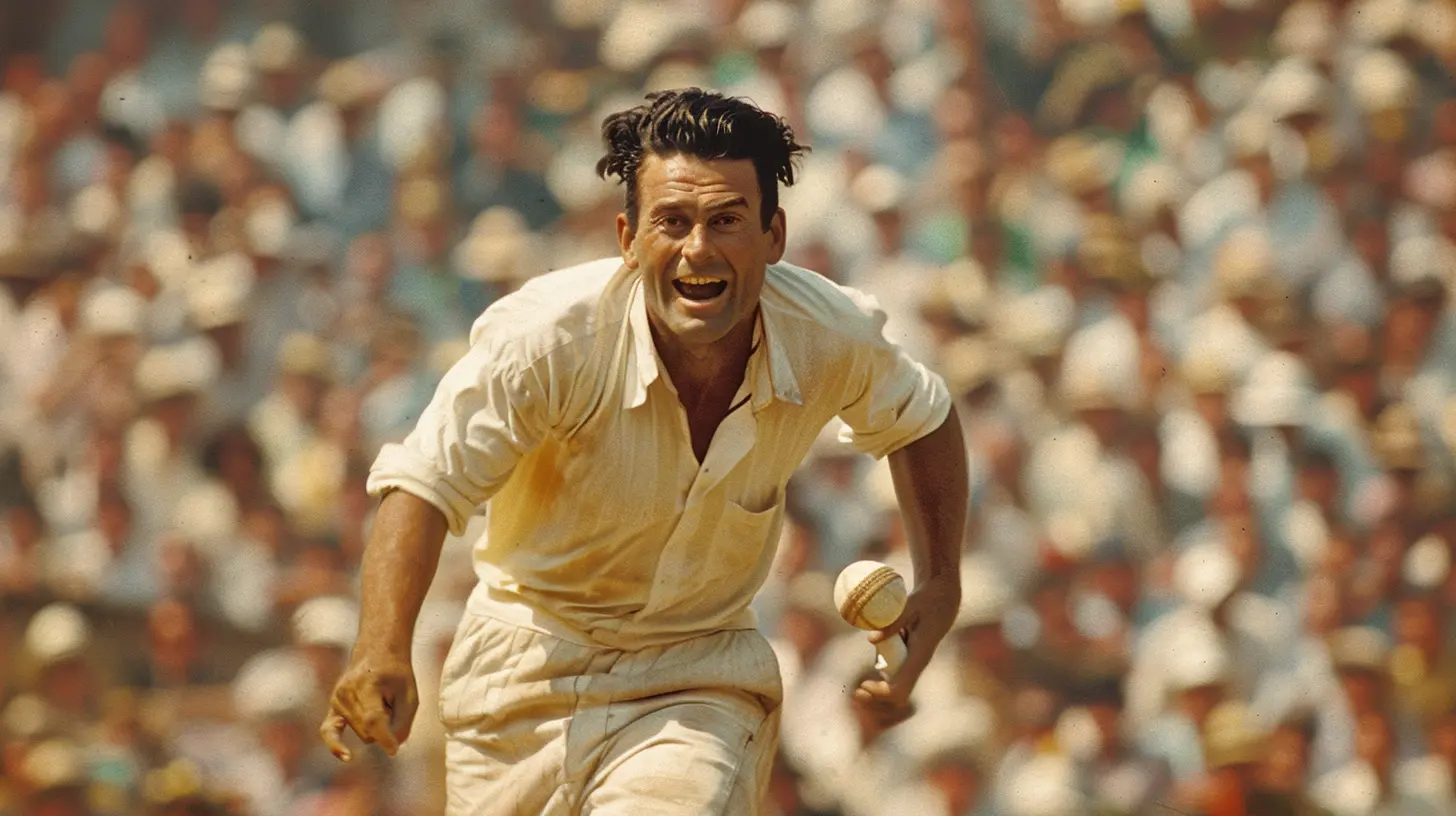How Legendary Bowlers Mastered the Art of Variation
16 June 2025
When you think of legendary bowlers, what’s the first thing that comes to mind? Lightning speed? Wicked spin? Deadly accuracy? Sure, those qualities matter — but the true secret sauce? Variation. That subtle, jaw-dropping ability to outthink batters, mess with their rhythm, and keep them second-guessing every ball. It's not just skill; it's almost like wizardry on the pitch.
You see, legendary bowlers don’t just bowl – they play mind games. They mix it up, disguise their deliveries, and drag the batter into their world of smoke and mirrors. Let’s dig deep into how these bowling maestros mastered the art of variation and turned it into a lethal weapon.
What Makes Variation So Crucial in Modern Cricket?
Let’s face it — batters today are fearless. Switch-hits, ramps, and reverse sweeps are just another day at the office. So, what keeps them on their toes? Variation. Whether it's T20, ODI, or a five-day Test match, bowlers need more than just pace or spin. They need unpredictability.Think of it like this — if you’re a chef and all you can cook is scrambled eggs, you won’t survive long in a gourmet kitchen. Same with bowling: if every delivery is the same, the batter will feast.
The Classic Types of Bowling Variation
Before diving into the legends and their signature moves, let’s get a quick refresher on the kinds of variations bowlers have up their sleeves:1. Pace Variation
Slower balls are often used in the shorter formats. Fast bowlers like to sneak these in to deceive a batter playing early. There’s the off-cutter, back-of-the-hand slower ball, and even knuckleballs.2. Spin Variation
For spinners, the magic lies in subtle wrist and finger movements. Think googlies, doosras, carrom balls, and the good ol’ arm ball.3. Length and Line
Changing the length — short one ball, full the next — instantly tampers with a batter’s footwork. Same with line: wide outside off-stump or suddenly cramping them on leg-stump.4. Angle and Seam Position
Left-arm quicks and right-arm bowlers going ‘round the wicket play with angles to create awkward bounce or reverse swing. Mastering seam position is like a painter knowing every stroke of their brush.
Shane Warne: The Magician with Endless Tricks
Ah, the “King of Spin.” Shane Warne didn’t just spin the ball — he hypnotized you with variety. His leg-breaks were classic, but then BOOM — he’d toss in a flipper or a wrong’un and leave the batter blinking.He once bowled a ball dubbed the “Ball of the Century” to Mike Gatting. That wasn’t just a leg-spinner; it was a masterclass in flight, drift, and turn — all in one delivery. Warne didn’t just bowl to get wickets; he bowled to break minds.
His secret? He’d set you up for five balls, then deliver something entirely unplayable on the sixth. That’s chess, not checkers.
Muttiah Muralitharan: Spin's Mad Scientist
Muralitharan had an arm that defied physics — and eyes that read batsmen like a book. His doosra was his weapon of choice, a torment for batters across the globe.What made Murali lethal wasn’t just his turn — it was his unpredictability. He varied the pace within his spin, something that’s insanely hard to do. Plus, his arm always looked the same. You couldn’t read him. He could bowl six different deliveries with the same action. That’s ninja-level stealth.
Glenn McGrath: The Master of Subtle Changes
McGrath wasn’t flashy. He didn't need to be. He owned the corridor just outside off-stump like it was his private property. While his pace remained steady, he mastered subtle variations in bounce, seam position, and line.What set McGrath apart? He knew exactly what each batter hated — and he had the patience to exploit it. He’d bowl the same ball four times, lull the batter into a rhythm, and then — bam! — a slightly fuller delivery that trapped them LBW or took the outside edge.
He wasn’t reinventing the wheel. He just knew how to make a wheel spin a little differently every time.
Jasprit Bumrah: The Modern Variation Virtuoso
Fast forward to the present, and nobody represents variation better than Jasprit Bumrah. His action is unorthodox, but it’s the control and deception that make him so menace-worthy.He swings it. He seams it. His yorkers are laser-guided. And his slower balls? Devilish. You just don't know what's coming next. That’s what makes him unpredictable.
In a death-over scenario, Bumrah doesn’t need to bowl 150+ kmph. He’ll toss up a slower off-cutter on middle stump, and you’ll miscue it like a rookie. That’s variation — packaged with precision.
Anil Kumble: The Silent Assassin
Kumble didn’t turn the ball massively — and guess what? He didn’t need to. He blended pace, bounce, and subtle tweaks in wrist movement to outfox the best.He was relentless. Every ball was a calculated move. He’d increase the pace ever so slightly, drawing the batter into a drive, only to see the ball bounce awkwardly and crash into the pads.
Kumble’s genius lay in understanding the conditions and tweaking his variations just enough to let the pitch do the talking.
Wasim Akram: The Sultan of Swing
Wasim made the cricket ball dance. Whether it was swinging in, out, or reversing like a boomerang, he could manipulate the shine, angle, and seam to create utter chaos.What really stood out was how he used variation to dominate in different formats and conditions. New ball? Classic outswingers. Old ball? Reverse swing thunderbolts. Slow pitch? Mix in cutters. You never got the same delivery twice in an over.
Wasim didn't just bowl — he conducted an orchestra of seam, swing, and speed.
Saqlain Mushtaq: The Doosra Architect
Before people even knew what hit them, Saqlain had already invented the doosra — a delivery that turned the opposite way of a traditional off-spinner.He was a thinking bowler. His variations came not just in spin but in delivery angles, pace, and tactics. It was psychological warfare. Saqlain wouldn’t just bowl to your weakness — he’d make you develop a new one mid-match.
And he always maintained the same action, making it near impossible to read what was coming.
How Do Bowlers Develop Variation?
Okay, now you’re probably thinking — “Cool, but how do these guys even pull this off?” Great question. It’s not just about raw talent. It’s about effort, observation, and insane attention to detail.1. Studying the Batter
Legendary bowlers are great readers. They look at a batter’s foot movement, shot preference, and even their body language. One small twitch — and boom! They’ve figured out how to trap them.2. Endless Practice
Those deceptive deliveries aren’t born in the heat of battle. They’re crafted in the nets, refined over thousands of repetitions. Spin bowlers tweak finger pressure. Pacers adjust grips millimeter by millimeter.3. Using the Pitch
Great bowlers let the pitch guide their variation. Is it dusting up? Time to bowl the quicker one. Is it holding up on the surface? Enter the slower ball.4. Disguising the Delivery
The best ones make every ball look the same... until it’s not. That’s the holy grail. Because once the batter starts guessing — they're on a slippery slope to the pavilion.The Impact on the Game
Variation changed the game. It empowered bowlers in a batsman-dominated era. It's why matches swing unpredictably, why you hold your breath every delivery in a T20 thriller.From economy rates to wicket tallies, variation leveled the playing field. It gave bowlers their edge back.
Final Over: The Art Lives On
So, what really separates the good from the great? Craft. And variation is very much at the core of that. It’s the paint on the bowler’s canvas, the twist in the tale.Whether it’s Warne tossing up a flipper, Bumrah whipping out a slower yorker, or Wasim reversing the old ball under lights — it all comes back to one thing: never letting the batter settle.
Cricket will keep evolving. But one truth will remain eternal — variation isn't just a trick... it’s an art form.
all images in this post were generated using AI tools
Category:
CricketAuthor:

Ruben McCloud
Discussion
rate this article
2 comments
Lumen McCaffrey
This article brilliantly highlights the essential techniques legendary bowlers use to create variation. Understanding their strategies can greatly enhance a bowler's skills in adapting to different game situations, ultimately leading to improved performance and greater success on the field.
June 21, 2025 at 3:56 AM

Ruben McCloud
Thank you for your thoughtful comment! I'm glad you found the article insightful and useful for improving bowling skills.
Layne McAdams
Mastering variation transcends mere technique; it's the soul of bowling. Legendary bowlers understand that manipulation of pace, spin, and trajectory creates a dynamic dialogue with the batsman. This artistry showcases not just skill, but an intricate dance of strategy, instinct, and psychological warfare on the pitch.
June 20, 2025 at 3:04 AM

Ruben McCloud
Absolutely! Mastering variation indeed elevates bowling from mere technique to a strategic art form, allowing bowlers to engage in a captivating battle of wits with batsmen.

